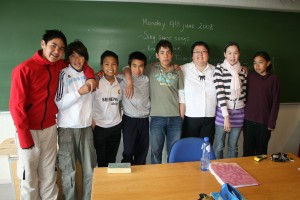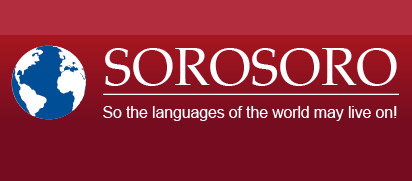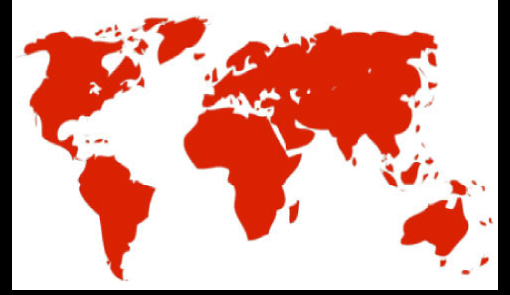Print  |
|


Greenland Inuits and problems in language teaching
Posted by Jean-Michel Huctin on December 13, 2010
Jean-Michel Huctin is a PhD student at University Paris Diderot and lectures in Arctic Anthropology at University Versailles Saint-Quentin-en-Yvelines. Since 1997, he regularly stays in a North Greenland Inuit community, whose language (Kalaallisut) he speaks. Engaged in the promotion of Inuit culture and in educational activities for the local youth, he is also co-author and co-producer of « Inuk» (http://www.inuk-film.com, to be released in 2011), the first fiction feature film entirely in the Greenlandic language.

© Jean-Michel Huctin
Until the end of the 1970′s, the educational system in Greenland (where 90% of the 57,000 inhabitants are Inuit) was giving priority to Danish, the colonial language, to the detriment of the majoritarian native language, Kalaallisut (West Greenlandic, of the Eskimo-Aleut languages group). As a result, Kalaallisut was threatened, the level of instruction of the population was stagnating at a very low level, and generations of adults (over age 30, who have received secondary or higher education in Denmark) prefer to read and write in Danish rather than in Greenlandic, when they have the choice (« it’s faster » they say).
Through the action of the first indigenous government in 1979 (upon finally becoming autonomous Greenland remained a part of the Kingdom of Denmark), Kalaallisut became the official national language and primary language of instruction. With the increasing number of native teachers, instruction in mother tongue contributed to saving Kalaallisut, now one of the strongest languages in the Arctic, and to continuously increasing the educational level of the youth: official statistics show that the number of people having completed their education almost doubled in the last ten years (Statistics Greenland, 2005 and 2009).
However, this remarkable success in elementary and middle schools failed to end the supremacy of the former colonial language, which today remains the key to academic success. The reasons being that a large majority of the High-school teachers are Danish (often the most skilled and in positions of direction), many textbooks are not translated, the level of high schools is sometimes considered better in Denmark, Greenland’s only University offers few curriculums, etc. Most young people who successfully complete their education are those who master Danish, including children of mixed couples who have not learned their mother tongue. Some Greenlanders even argue that there are too many students who cannot get further education because they cannot speak Danish.
In addition, Inuit students from Greenland, like other young people of the world, must also learn English which will broaden their international horizon more than Danish. The education system is therefore trilingual and these students spend much of their time learning languages.
As for students from the East Coast, they learn Tunumiisut (around 3000 speakers) within their family, while those of Thule in the extreme Northwest speak Inuktun or Avanersuarmiutut (around 1,000 speakers), all of which are regarded as dialects by Greenlandic authorities. They must moreover, just like their fellows on the West Coast, learn three languages at school: Kalaallisut, Danish and English.
The educational system thus involves using three languages, sometimes four! The huge linguistic efforts required are a source of discouragement and finally contribute to school failure. The problem is not only one of cognitive overload: together with having to abandon their own mother tongue for the prescribed mastery of more or less “foreign” and sometimes formerly “colonial” languages, students in Greenland are judged according to new ways of thinking, they undergo different teaching contents, methods and modes of evaluation, and are compared with students who have not been compelled to make similar efforts. Some students “feel degraded”, complains Aviâja E. Lynge (Greenlandic anthropologist and education specialist), “because they must adapt to Western standards and because the education system is too different from their own culture.”
The old debate on language is not over : it regularly revives the passions of this post-traditional and ex-colonial Inuit society…








